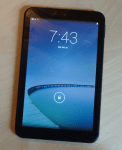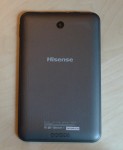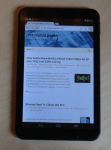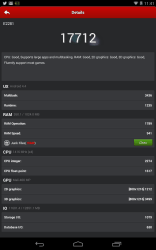The Digital Reader |
| Is Kindle Unlimited Good or Bad for Authors – Six Viewpoints Posted: 20 Jul 2014 05:55 PM PDT
Being neither an author nor a publishers, I sat out the debate, but as I looked over the links I collected for tomorrow’s Morning Coffee post I realized that had an excess of links for this one topic. And even though I have no opinion either way on the question, I can see that I am in the minority.Here are 6 different takes on this question, including a couple which address the point from unusual tangents. But first, some background. Kindle Unlimited is a $10 a month subscription ebook service from our favorite ebook retailer, Amazon. The service boasts over 600,000 ebook and audiobook titles which can be read on Kindles or Kindle apps. KU is currently limited to the US, but that is almost certainly going to change in the next few months. Like the Kindle Owner’s Lending Library, Kindle Unlimited draws most of its catalog from KDP Select. This is a special subsection of Amazon’s ebook distribution platform which offers additional promotional opportunities, requires exclusivity, and pays authors from a pool of money when an ebook is loaned in KOLL or KU. (That pool is worth $1.8 million in July, and will be increased next month). Many of the posts focus on whether subscription ebook services are a good idea, while others question whether anyone should be giving Amazon an exclusive. I tend to think that is a bad idea, but I also think that this is a self-correcting issue which will fix itself in the long run. I’m basing that prediction on reports like the one from Nick Stephenson, an author who recently removed one of his ebooks from KDP Select:
If other authors are sharing Stephenson’s experience, then I would bet the issue of Amazon exclusivity is probably going to solve itself in the long run. Or at least that’s what I think, but not everyone is willing to let the market sort itself out. Mark Coker, for one, is as much against exclusivity now as he was when KDP Select launched in late 2011, Writing on Friday:
Not everyone thinks it’s a bad idea; Will Entrekin, the publisher at Exciting Press, has not only signed up to use KU as a customer he has also submitted some titles from his catalog to KDP Select:
I don’t think his decision is a good idea (see the Stephenson quote above), but I also am well aware that there’s no one size fits all solution. We cannot discount the possibility that someone is making KDP Select work for them and generate more revenue than if their ebooks are available elsewhere. Not everyone, though, is looking at this in terms of its affect on authors; some commented on how it might affect the ebook amrket as a whole. Saying he is “cautiously optimistic”, Chuck Wendig wrote:
Wendig isn’t the only one who is optimistic; the team at Archangel Ink were in high spirits when they read about Kindle Unlimited:
Some like Chris McMullen are more ambivalent:
So what do you think? Who is right? The post Is Kindle Unlimited Good or Bad for Authors – Six Viewpoints appeared first on The Digital Reader. |
| Review: Hisense Sero 8 is Good but Not Great Posted: 20 Jul 2014 06:32 AM PDT
I for one was expecting Hisense to repeat that trick in 2014, but that hasn’t happened. Now that I’ve had my hands on the Sero 8 for a week I can see that Hisense has made a good tablet, just not one which deserves the praise lavished upon the Sero 7 Pro last year. Hisense has only launched a single tablet in the US and Europe (a second tablet just cleared the FCC). The Sero 8 isn’t quite what I would expect in a replacement for the Sero 7 Pro; it is a mid-sized tablet with a budget price of $129 and (aside from the cameras) the specs and performance of similarly-priced mid-grade 8″ Android tablets like the Acer Iconia A1-830. Review Date: 20 July 2014 – Review unit purchased from the Walmart store in Manassas, VA HardwareThe Sero 8 is taking over the reins as Hisense’s flagship tablet from the no longer available Sero 7 Pro, and in several ways it is a better tablet. The Sero 8 sports a 1.4GHz quad-core Rockchip CPU with 1GB RAM, 16 GB internal storage, and two cameras. It has both Wifi and Bluetooth, a microSD card slot, and an 8″ screen. At first glance and at second glance, the Sero 8 looks like a generic Android tablet. It’s made to be held in landscape position, and it has a simple black glass front with a textured plastic back. The single speaker is on the lower back of the tablet, along with a 2MP camera. The front-facing VGA resolution camera is centered over the screen, and on the upper edge you’ll find the power button, headphone jack, USB port, and microSD card slot. The Sero 8 has a more powerful CPU than most tablets in this price range (including the Sero 7 Pro), and it also ships with better cameras and more storage. The cameras are admittedly weaker than on the Sero 7 Pro, but then again that tablet had better cameras than what you could find on a $99 budget tablet.    ScreenThe quality of the screen is one of my chief concerns for budget tablets, and the Sero 8 doesn’t disappoint. This tablet has an 8″ display with a resolution of 1280 x 800. Unlike cheaper tablets, the color quality is great, and the viewing angle is on par with the iPad. The Sero 8 can be viewed from virtually any angle (including close to 90 degrees to the left, right, up or down) without any decrease in color quality or the viewing experience. Not only is the screen good, this tablet could well double as a flashlight. At maximum setting the backlight is somewhat brighter than the one on my Kindle Fire HD, and at its dimmest the backlight on my Sero 8 Pro is also somewhat brighter than the one on my Kindle Fire HD. CamerasThe Sero 8 is equipped with a 2MP camera and a VGA resolution webcam. I tested both cameras outside, and they are quite good. There’s no LED flash on the rear camera, so it won’t be much good for less than brightly lit situations, but it still takes a high quality photo. The cameras are supported by the basic camera app, with the usual minimal features. BatteryAccording to the specs posted online, the Sero 8 has a 4Ah battery, with an estimated battery life of 7 hours. I think that is a conservative estimate. My tests suggest that the Sero 8 has a video run time of over 6 hours. Regular runtime will likely exceed 8 hours and can be extended by avoiding intensive tasks like watching movies or playing games. My estimate is based on playing a 1080p video with sound at full volume and Wifi on. While this isn’t the most intensive use of the battery, but it does offer a good yardstick because most activities short of 3d gaming will need fewer resources. I have also noted that the Sero 8 has a standby time of around 5 days, which is fairly common for budget Android tablets. SoftwareThis tablet ships with Android 4.4 KitKat, Google Play, and a minimum of bloatware. In addition to Google’s mandated apps (Play Newsstand/Music/Books/Games/, Voice Search, Hangouts, maps, etc) Hisense has only installed 4 apps, three of which belong to Walmart (Vudu and two shopping apps for Sam’s Club and Walmart.com). The 4th app is a TV remote app which could prove useful for anyone who still owns a TV. I installed a few apps myself, but I will admit that I didn’t test the software features as extensively as I could. I didn’t really see the need. The Sero 8 runs a stock version of Android 4.4 with few additions. There’s not much to say about it. Performance
And it delivers. The Sero 8 is noticeably peppier than the 7″ Android tablets sitting on my desk. It more than fills my needs for a budget device, and if nor the my discomfort over the screen size I would be sorely tempted to keep the Sero 8 and see if the extra power enabled me to get more done, faster. Audio & VideoThe Sero 8 comes equipped with the basic gallery app, the stock media player, Youtube, Vudu, and a video player app which I somehow managed to get to display in a window (I have not managed to get it to repeat that trick). I haven’t tested the Vudu app, but the first three work just fine. Given the Sero 8′s score on Antutu, we already knew that it was more than powerful enough to handle virtually any video thrown at it, even 1080p videos or higher. They look great, but the audio is another matter. The Sero 8 only has a single rear-facing speaker, and it was (at its loudest) very quiet. This is not a speaker you can use in a quiet room; it’s simply not loud enough. I think you will need to plan on using the headphone jack, or a pair of BT headphones. On the plus side, the audio quality of that quiet speaker was generally good; I listened to several songs with tricky audio and most of the keywords came through clear. VerdictThis is a solid tablet. The build quality is great, and Hisense used decent components (especially the cameras) and they added more storage than I would have expected. The Sero 8 even scored well on the performance test. But I for one don’t like the screen size. Yes, I know this is picking nits, but the Sero 8 is too heavy and too large for me to comfortably pick up by gripping the edges. This is one of the things I like about 7″ tablets, which I can easily scoop up and carry one-handed. The Sero 8 is bigger, and yet it doesn’t offer a significant increase in screen real estate in trade. What’s more, the Sero 8 has the same screen resolution as many 7″ tablets, spreading the same number of pixels over a larger area. But still, this is a good tablet – just not as good of a deal as the Sero 7 Pro was last year. At $149 the Sero 7 Pro was incomparable, while the Sero 8 has at least one 8″ tablet that offers a similar value. Right now I also have the Acer Iconia A1-830 sitting on my desk. This tablet has similar performance and comparable specs (better cameras but no card slot), and only costs $10 more on Amazon.com than the $129 list price for the Hisense Sero 8. I can see the good points in the Sero 8, but I wouldn’t recommend rushing out and buying it right away – not when you should also consider what else is on the market in the same price range. It is a good tablet, though. Where to BuyWalmart is supposed to be the exclusive retailer, but they do not sell it on Walmart.com nor is it carried in most stores. You’ll need to check the Walmart website and see if any stores near you have this tablet in stock. It could be rather difficult to get your hands on a new Sero 8; you might want to check Ebay. You could also look for a refurb, but I don’t know that any are available when I wrote this post. Specs
The post Review: Hisense Sero 8 is Good but Not Great appeared first on The Digital Reader. |
| You are subscribed to email updates from The Digital Reader To stop receiving these emails, you may unsubscribe now. | Email delivery powered by Google |
| Google Inc., 20 West Kinzie, Chicago IL USA 60610 | |

![hisense-sero-8[1]](http://the-digital-reader.com/wp-content/uploads/2014/06/hisense-sero-81.jpg)

No comments:
Post a Comment